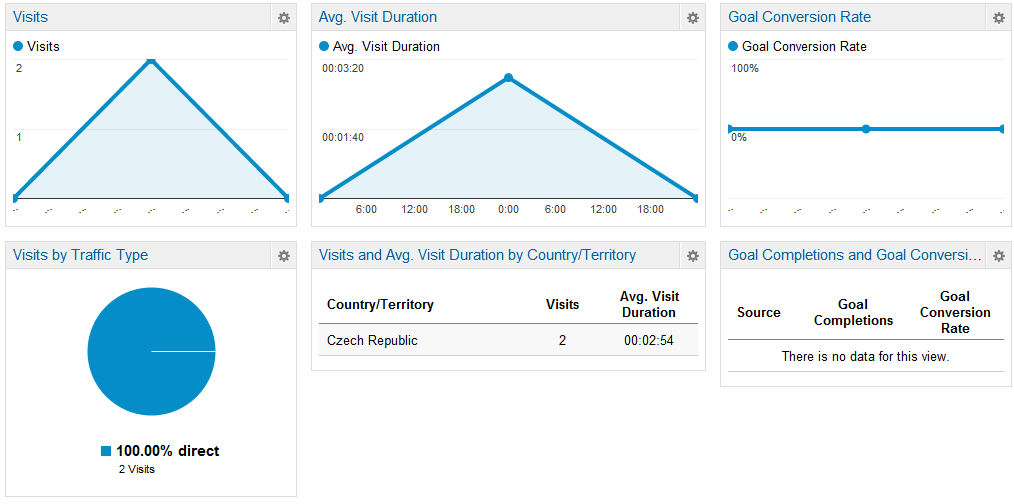Using Google analytics
Kentico allows you to use Google analytics as an alternative way of measuring and analyzing the key metrics of your website. This is done by placing the Google analytics web part onto your website.
Setting up a Google analytics account
To be able to configure the Google analytic web part, you need to have an existing Google analytics account set up for the website that you want to monitor.
On the Google analytics website, you can either Sign in to your existing account or Create an account if you don’t have one already.
Signing in using an existing account
If you sign in using an existing Google analytics account, a page listing your currently tracked websites opens. Click Admin in the top bar of the page to access Account administration.
Use the Account drop-down list to create a new account.
Creating an account
- Fill in the information about the website you want Google analytics to track:
- Account Name - the name under which you want your website to be listed in Google analytics.
- Website’s URL - the URL used to access the website you want tracked by Google analytics.
- Click Get Tracking ID.
- Accept the Google Analytics Terms of Service Agreement.
- On the next page, note down the Tracking ID,which you will use to configure the Google analytics web part in Kentico.
Using the Google analytics web part
Now that your Google analytics account is ready and you have your Tracking ID,place the Google analytics web part onto your website.
Open the Pages application.
Select the root of your site in the content tree.
Open the Design tab.
Place the Google analytics web part onto the page.
- We recommend placing the web part to a web part zone that is inherited by all pages on your website. See also: Inheriting portal engine page content
- The Google analytics web part has no impact on the page’s live site appearance.
In the web part’s properties, enter the Tracking code that you received on the Google analytics website.

By enabling the Use asynchronous script property, you can have the web part use a different version of the tracking script. The script loads sooner when visitor arrives on the website. This makes it more likely that the analytics count the visit into the statistics, even when the visitor leaves the page before it is fully loaded.
Click Save & Close.
You should now see the Google analytics web part in the target web part zone.
Using the Javascript web part
You can also place the Javascript web part onto the root page of your site and copy the Tracking code from the Google analytics website into the web part’s In-line script field. Moreover, you can select the location on the page, where the in-line javascript code will be inserted, in the web part’s In-line script page location drop-down list.
Checking Google analytics tracking status
- Open the Google analytics website and navigate to Admin.
- Select your Account and Property in the appropriate columns.
- Click on Tracking info -> Tracking code.
- Near the tracking ID, you should see a status. The status should change several minutes after placing the Google analytics web part in Kentico.
![]()
The possible tracking statuses are:
- Waiting for Data -The tracking code has been detected on the homepage of your website, and the Google Analytics servers are updating your configuration before your data can be processed and appear in your reports.
- Tracking Installed - You’ve got the tracking code set up, and it’s collecting and sending data to your property. You can still use the other tools, like the Google Analytics Debugger, to do a more in-depth analysis or to troubleshoot your set up.
- Unknown - There’s no data available that Google Analytics can use to tell if your tracking code is working. Check your set up to see if you can find a solution.
Leave up to 24 hours for Google analytics to aggregate the website’s data and for the status to change from Waiting for Data to Tracking installed.
Viewing Google analytics reports
Once Google analytics tracking is working correctly, you will be able to see reports of your website’s visits and other statistics on the Google analytics website. Refer to the Google analytics Help website for more information on the various types of reports.
